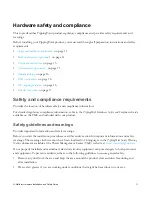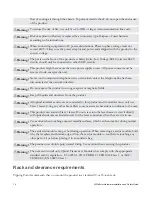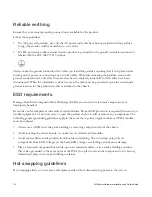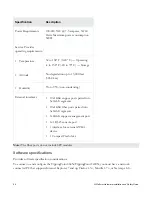
N-Platform Hardware Installation and Safety Guide
17
Some TippingPoint devices allow you to hot swap cards or modules. The TippingPoint has a comprehensive
detection system that senses automatically when you add or remove a card or module. It then runs
diagnostic and discovery routines and acknowledges the presence or absence of the card.
If you remove a card or module and replace it with the same type of card or module, the system resumes
operation without any operator intervention.
• Do not force the card or module into its slot. This can damage the pins on the backplane if they are not
aligned properly with the card or module.
• Ensure that the card or module is straight and not at an angle when you install it in the slot, which can
damage the equipment. Use the guide rails to install the card or module correctly.
• Fully depress the ejector tabs to ensure that the card connector mates with the backplane correctly.
Firmly seat the card in the slot by locking the card with the black levers.
Unpack the product
Describes how to unpack the product.
Each chassis is securely packaged in a shipping box.
Caution:
ESD can damage the product if you do not take necessary precautions. Installation and
maintenance personnel should be properly grounded using ground straps to eliminate the
risk of ESD damage to the equipment. All cards and modules are subject to ESD damage
whenever they are removed from the chassis.
Use caution when opening the product boxes.
To unpack the product, complete the following steps:
1.
Inspect the packing container.
If you see any damage or other signs of mishandling, inform both the local freight provider and
TippingPoint before unpacking. Your freight provider can provide you with the procedures necessary to
file a claim for damages.
2.
Carefully open the box.
3.
Remove all packing material.
4.
Verify the contents in the shipping package.
Compare the packing list to your shipment and to your order. Are all items included? If items are
missing, contact your TippingPoint sales or field representative.
5.
Remove the chassis from the box.
6.
Open the accessory kit.
It contains the cables, documentation, and management software.
















































